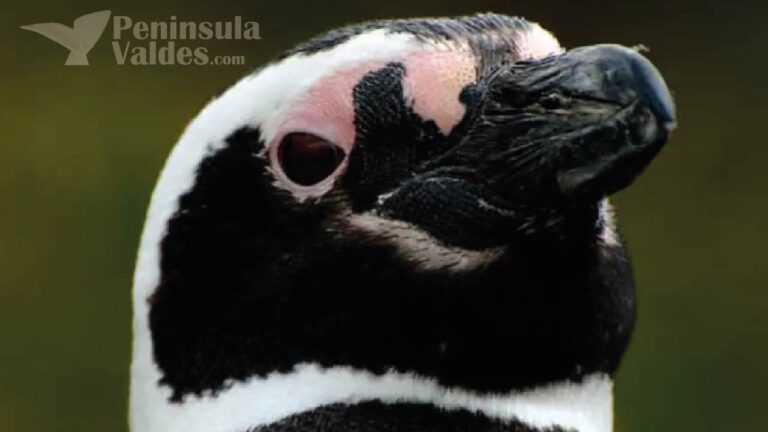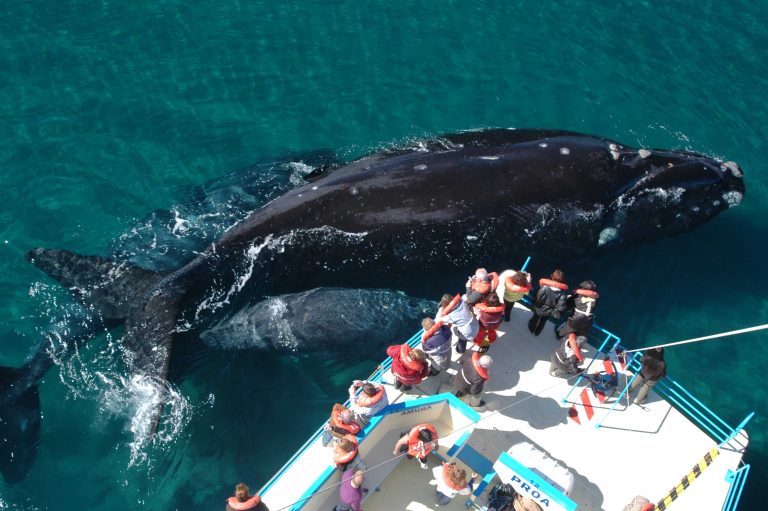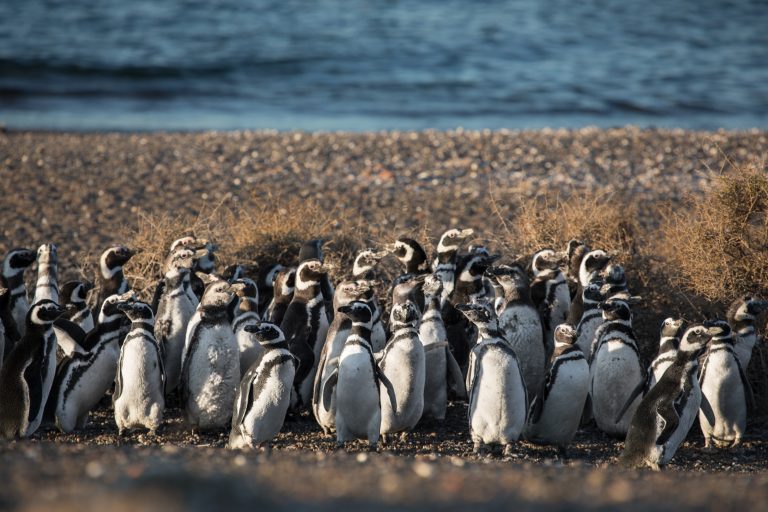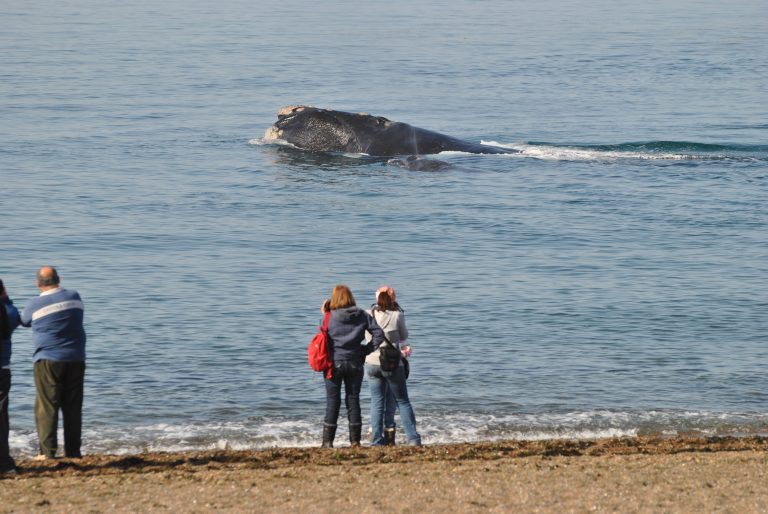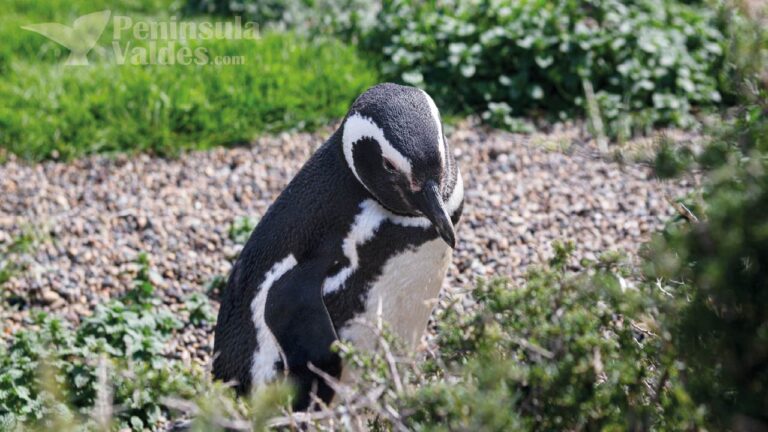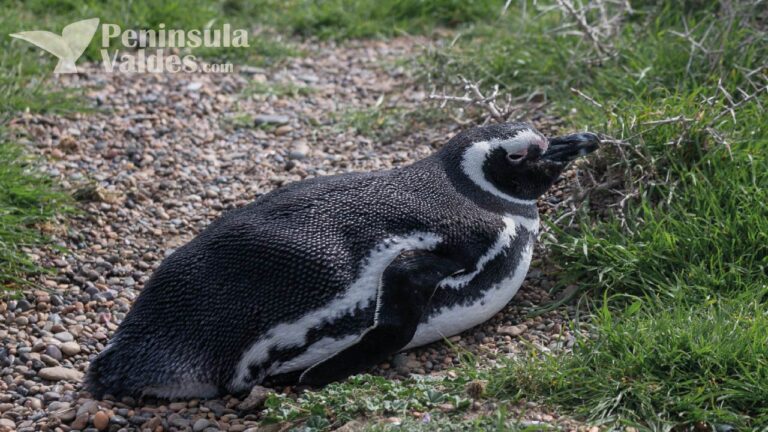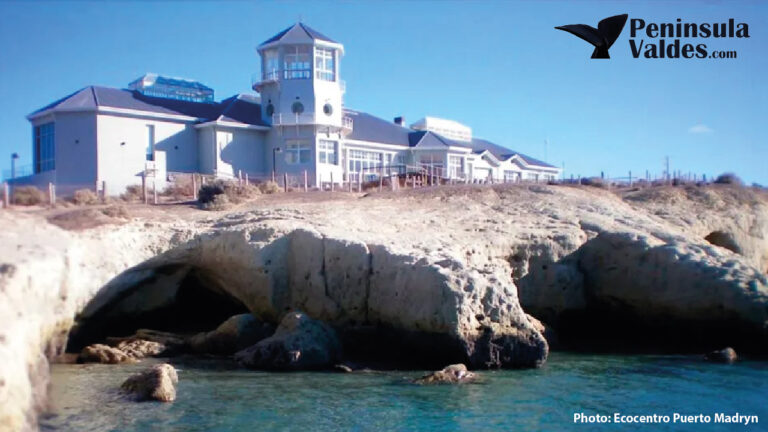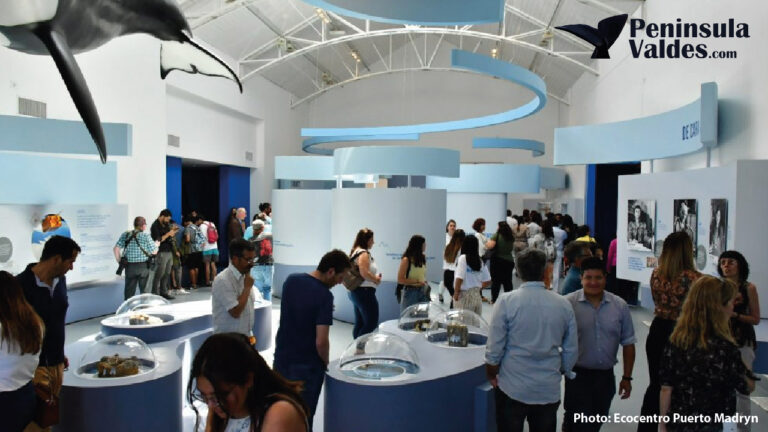Penguins in Peninsula Valdes and Punta Tombo
Penguins are one of the highlights in Peninsula Valdes area and can be seen in the area from September to March/April. And can be watched in two places: Punta Tombo, located to the south of Puerto Madryn, and also in Estancia San Lorenzo in the Peninsula. Now, September and October is mating season. Then, male penguins begin to arrive to reconditioning their nests and one month after that, female penguins arrive which lays only two eggs around October. After around 35-40 days of incubation (activity shared between the male and the female), new penguins are born. Both males and females preserve the nest and feed the chicks with anchovies and squid. These chicks are covered with a dark gray down that they move in February by a plumage that will allow them to go into the sea to find their own food. Just a year later they acquire adult plumage. Take a look below, to the penguin season to enjoy these incredible animals in Patagonia:
Peninsula Valdes Tour With Whale Watching
Embark on a Peninsula Valdes tour for unforgettable whale watching and rare wildlife encounters. Expert guides and transfers included. Book now!
From Price: USD 279
Penguins in Patagonia: Peninsula Valdes and Punta Tombo
The Magellan or Magellanic Penguin. Information & Characteristics
The Magellanic penguin is a South American penguin, breeding in coastal Patagonia, including Argentina, Chile, and the Islas Malvinas, with some migrations to Brazil, where they are occasionally seen. It is the most numerous of the Spheniscus penguins. Its nearest relatives are the African penguin, the Humboldt penguin, and the Galápagos penguins. The Magellanic penguin was named after Portuguese explorer Ferdinand Magellan, who spotted the birds in 1520 during the expedition to Patagonia.
Magellan penguins are medium-sized which grow to be 61–76 cm (24–30 in) tall and weigh between 2.7 and 6.5 kg (6.0 and 14.3 lb). The males are larger than the females, and the weight of both drops while the parents nurture their young. Adults have black backs and white fronts. There are two black bands between the head and the breast, with the lower band shaped in an inverted horseshoe. The head is black with a broad white border that runs from behind the eye, around the black ear-coverts and chin, and joins at the throat. Chicks and younger penguins have grey-blue backs, with a more faded grey-blue color on their chest. Magellanic penguins can live up to 25 years in the wild, but as much as 30 years in captivity. Young birds usually have a blotched pattern on their feet, which fades as they grow up into adulthood. By the time these birds reach about ten years of age, their feet usually become all black.
Magellan penguins feed in the water, hunting cuttlefish, squid, krill, and other crustaceans, and ingest seawater with their prey. Their salt-excreting gland rids the salt from their bodies. Adult penguins can regularly dive to depths of between 20m to 50m deep in order to forage for prey. During the breeding season males and females have similar foraging and diving patterns as well as diet composition, however, bone tissue analysis suggests that diets diverge post-season when limitations imposed by chick-rearing are removed.
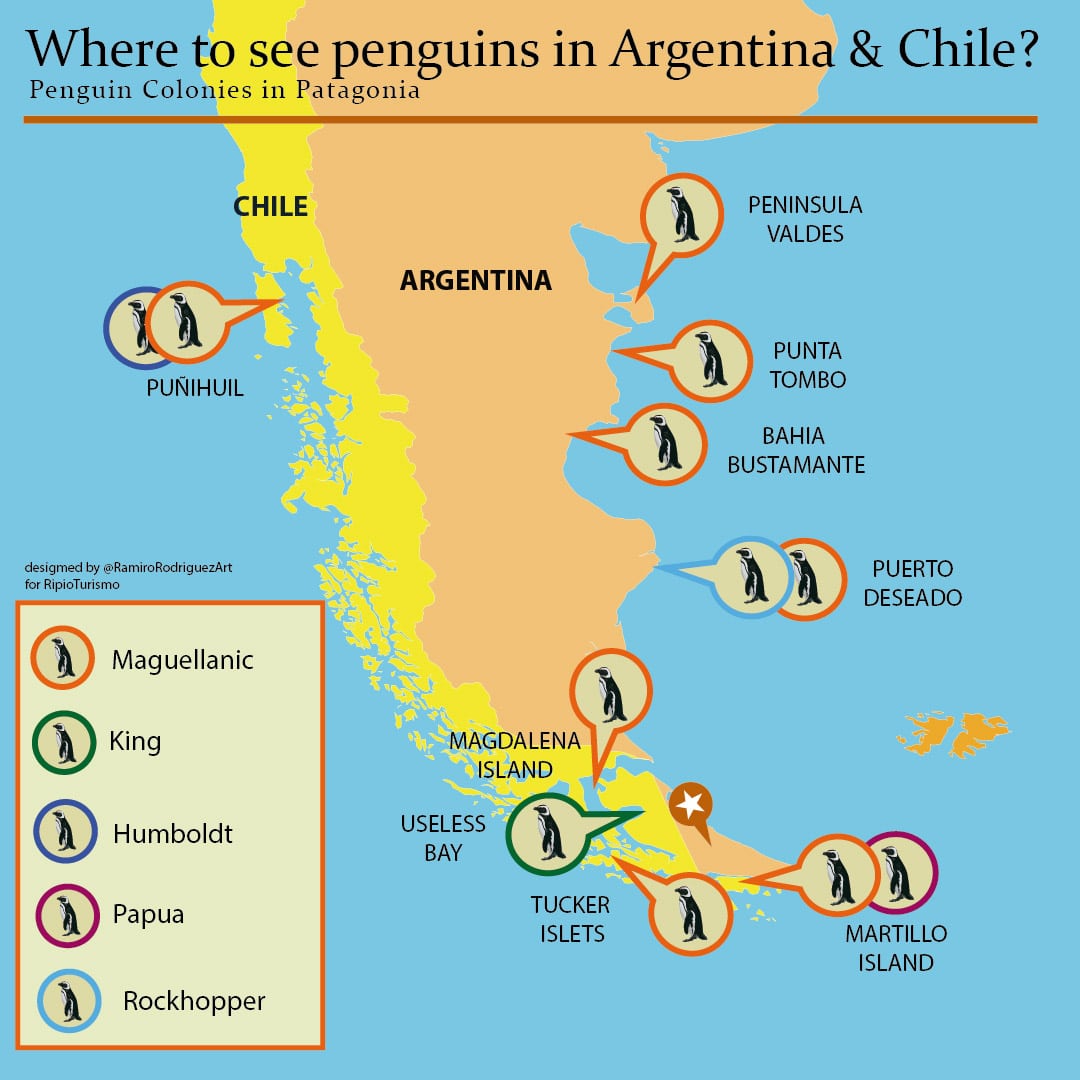
Penguins in Peninsula Valdes: when to see them?
Penguins can be seen from September to April in the area of Peninsula Valdes and Punta Tombo.
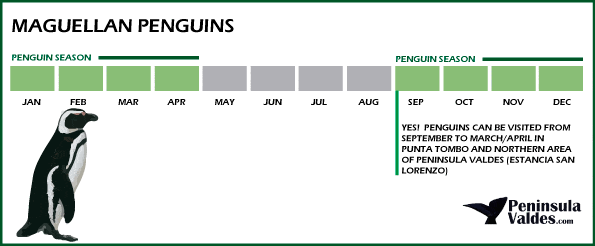
Where to see penguins from Puerto Madryn?
If you’re visiting Puerto Madryn and want to see penguins, you have a few great options nearby. The best places to see them are:
1. Punta Tombo Penguin Reserve (Best Option – Largest Colony)
-
Distance: 180 km (about 3 hours by car).
-
Why visit? It’s home to over a million Magellanic penguins, the largest colony in South America.
-
Best time: September to April (chicks hatch in November-December).
-
How to get there: Drive yourself or take a guided tour from Puerto Madryn or Trelew.
2. Punta Norte (Seasonal Orca Hunting & Some Penguins)
-
Distance: 170 km (inside Peninsula Valdés).
-
Why visit? Mostly known for orcas hunting sea lions in March-April, but you can also see some penguins.
-
Best time: October to April for penguins, March-April for orcas.
3. Estancia San Lorenzo (Smaller, Less Crowded Colony)
-
Distance: 160 km (inside Peninsula Valdés).
-
Why visit? A private reserve with a penguin colony of around 500,000. It’s less crowded than Punta Tombo.
-
Best time: October to March.
-
Bonus: You can enjoy a traditional Patagonian lamb barbecue here.
4. Isla Escondida (Hidden Gem for Penguins and Elephant Seals)
-
Distance: 90 km (1.5 hours by car, near Rawson).
-
Why visit? A less touristy beach where you can see penguins mixed with elephant seals.
-
Best time: October to March.
-
How to get there: By car, but no official tours—best for independent travelers.
5. Isla de los Pájaros (Limited Viewing from Afar)
-
Distance: 75 km (inside Peninsula Valdés).
-
Why visit? It’s a bird sanctuary with some penguins, but you can’t walk among them like at Punta Tombo.
Which One Should You Choose?
-
If you want the ultimate penguin experience → Punta Tombo 🏆.
-
If you’re already visiting Peninsula Valdés → Estancia San Lorenzo is a great addition.
-
If you want a less crowded option → Isla Escondida. Services to see this area should be booked in private
Punta Tombo Penguin Rookery Tour
Embark on a captivating journey to Punta Tombo, home to a thriving penguin colony. Discover the wonders of Patagonia's wildlife.
From Price: USD 130

